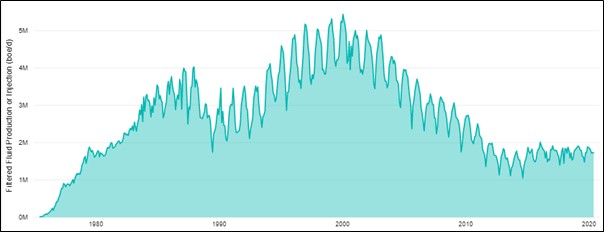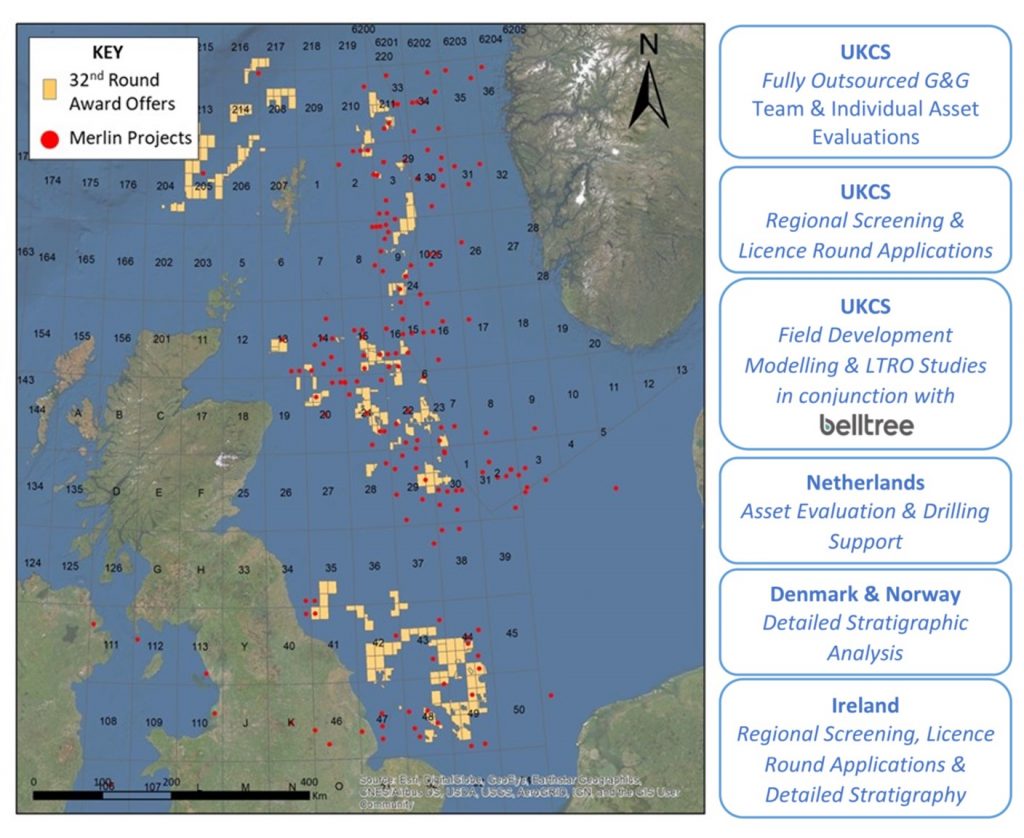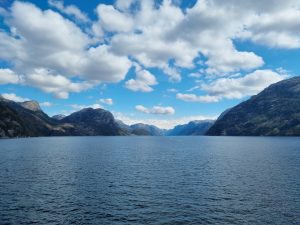In the overall doom and gloom of the current COVID environment in the UK it was great to see the positive news come out about the 32nd UKCS licensing round awards. We would like to pass on our congratulations to all the companies who have been offered licences.
A total of 113 award offers were made to 65 companies by the OGA which shows that interest in the UKCS continues apace. Despite reductions in energy consumption over the last few years (1), production from the UKCS is required to safeguard a continued domestic supply of energy to the UK. However, the UKCS is now a mature basin and innovative thinking, be it geoscientific or technological, is required to maximise recovery of the estimated 10-20 Bboe remaining resources identified by the OGA.
This innovative thinking is happening, with the UKCS hydrocarbon production curve flattening over the last 8-10 years (Figure 1). The OGA report (2) that in 2018 £241 MM was spent developing and deploying technologies and the plans are for this to increase. The close communication between different specialisms enabled by technological advancements in computing allows a field to be interpreted as a whole combining both static and dynamic knowledge and resulting in improvements in interpretation and hence development.

(https://data-ogauthority.opendata.arcgis.com/pages/production)
Innovation in the UK doesn’t need to stop there though, if the OGA targets for MER within UK 2050 net zero are to be met there is further work to be done. Oil and gas projects are here to stay for the immediate future and so steps to limit the carbon intensity of oil and gas activity on the UKCS has to be a key driver. Subsurface expertise plays a key role in achieving solutions that help to optimise returns in later field life projects and which minimise unnecessary oversizing at the initial development stage. Similarly, the options for CCUS during field life, or for re-purposing exploited fields for CCS are predicated on proper characterisation of the subsurface reservoirs.
One clear positive of recent months is that the conversation around the energy transition has gained pace, with companies throughout the economy looking to make the changes needed to achieve net zero targets. This week I attended the Future Geo 2.0 conference and talk was around geoscientists being the custodians of future Energy solutions. WE need to step up and determine how our subsurface skills can contribute to the innovation required and hence support the global transition to green energy solutions.
Merlin has been working on assets across the UKCS since the 1980s and has a wealth of experience gained across the basin within a wide range of field stratigraphies and trap types (Figure 2). As employee owners who are passionate about our technical specialisms and see our place within the global energy future, we are dedicated to being part of the solution. As such, we are leveraging our combined knowledge with innovative thinking to try and identify future energy pathways both in minimisation of carbon intensity in oil and gas projects and in green energy alternatives. We are also actively forming new partnerships with similarly minded companies to design and implement new workflows.
If you have a project that requires some lateral thought or to secure an economic ‘green’ future why not get in touch, you never know we may see the problem from a slightly different angle. We are always happy to talk!
Cal us on: +44 (0) 1531 636000
Email us on: info@merlinenergy.co.uk.

(1) Department for Business, Energy and Industrial Strategy Statistical Press Release
(2) https://www.ogauthority.co.uk/media/5939/oga_technology_insights_report_2019-v2.pdf#:~:text=Innovation%20is%20very%20important%20to%20the%20future%20of,17%25%20of%20opportunities%20at%20an%20initial%20concept%20stage.



